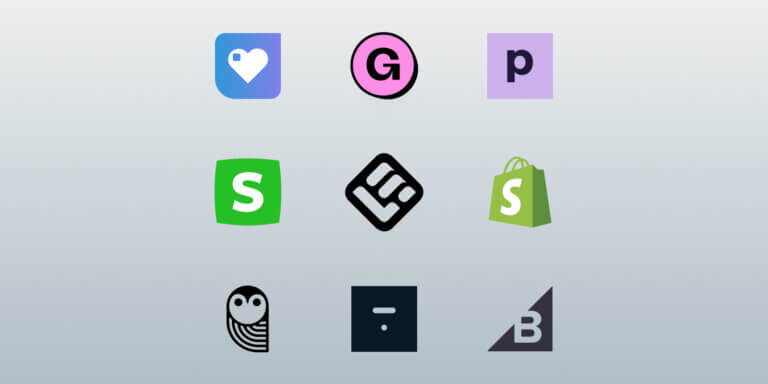Table of Contents
Planning on dipping your toes into ecommerce this year? If you’re thinking of selling digital products, you’ve got the right idea.
Revenue from online spending is expected to reach $6.8 trillion by 2028 [1]. That’s right—trillion. And a growing share of that is digital: no shipping, no inventory, just instant delivery and global reach.
The digital products you choose to sell are undoubtedly important. But just as important? The digital goods marketplace you choose to sell them on.
To get you started, here’s a quick look at the 10 best platforms to sell digital products in 2025. We’ve also included their G2 score based on real user ratings and some pros and cons.
Why should you sell digital items online?
First of all, Forbes predicts that digital marketplaces are about to replace physical ones. If that’s not enough for you, here’s a quick look at some major upsides of selling digital products online.
Low overhead, high profit potential
With a digital product, you make it once and then sell it again and again and again. Once you’ve made the product, your ongoing costs are usually just the tools you use to sell and market it, and those can be pretty minimal. That leaves more room for profit, even if you are just starting your online business.
Easy to scale
Digital products can grow with demand without adding complexity. You don’t need more space or staff to sell more. Once your product is ready, you can sell it to ten people or ten thousand using the same system. Your income grows, but your workload stays the same.
No inventory or shipping hassles
Selling one digital product is no different than selling a hundred. There’s nothing to restock or pack up with an online storefront, and no new process to manage as orders increase. You have no materials to buy and no worries about your products getting lost or broken in transit.
The best ideas for selling digital products
Some digital products are more in demand than others. A strong digital product solves a problem or teaches something useful. It can be delivered instantly, and once it’s made, it can keep selling through your online storefront with little to no upkeep.
Here are our top 10 ideas for digital products this year:
These are top-selling digital products for three reasons. They are quick to make and can be easily downloaded or delivered. And—the most important thing—they support real goals and solve modern problems. People buy these digital product offerings because they actually want to use them.
The importance of choosing the best place to sell digital products
Aren’t all selling platforms basically the same? Don’t they offer essentially the same features and support? In short, no. And the one you choose can either make selling digital products a breeze or leave you banging your head on your desk in frustration.
The wrong platform can cost you. Not just in sales, but in your time, credibility, and sanity. If you have an unprofessional, buggy interface or confusing checkout procedures, customers will leave and look somewhere else.
Some platforms make it easy to sell and scale, while others limit how much you can market or skimp on analytics. It’s important to choose a platform that supports the type of product you’re selling and offers features that support your online business as it grows.
What to consider when choosing a platform to sell digital products
So, what should you look for when picking a platform? It can help to think of how you want your customer journey to look and how you want your admin experience with it to be.
Is it easy to use?
Many selling platforms offer a free trial before you commit. Feel free to use it. This gives you a chance to check if it’s easy for you to use. If you’re constantly bouncing between the platform’s support and Google to get things working, it might not be the platform for you. And chances are, if you struggle to use it, your potential customers might too.
What’s the cost and hidden fees?
Different platforms, different pricing models. Some have a set monthly fee, others take a small—or hefty—chunk of each sale. Some do both and tack on payment processing fees. Do a deep dive into the platform’s pricing models and chat with a sales rep who can help you understand possible cost scenarios.
Does it support downloads and streaming?
If you plan to sell anything more than a basic PDF, this is a big one. This is especially important for courses, as you don’t want your customers to have to deal with buffering, choppy content. And if you sell video or audio files, the platform should be able to handle quick downloads in multiple file formats that don’t compromise the quality of your product.
Can you customize your store?
When someone lands on your store, they’re deciding whether to trust you. If it doesn’t match your website or social media, customers feel uneasy. Customization lets you keep your branding consistent across platforms—same logo, same colors and fonts—so your business looks legit. It helps people remember you and makes buying feel like a safe decision.
Does it offer marketing tools?
How can you make sales if you can’t connect with your ideal customers? Marketing is so, so important when it comes to selling digital products. You need an ecommerce platform with built-in marketing tools that make it easy and help you track what’s working and what isn’t.
Learn more about how to sell digital products online
10 best platforms to sell digital products and goods online
As you peruse these platforms, we want you to know that they are all fantastic choices. The best website to sell digital products will really depend on what you are selling and how a platform’s features help you make those sales.
With that in mind, here are the 10 best platforms to sell digital products online:
1. LearnWorlds
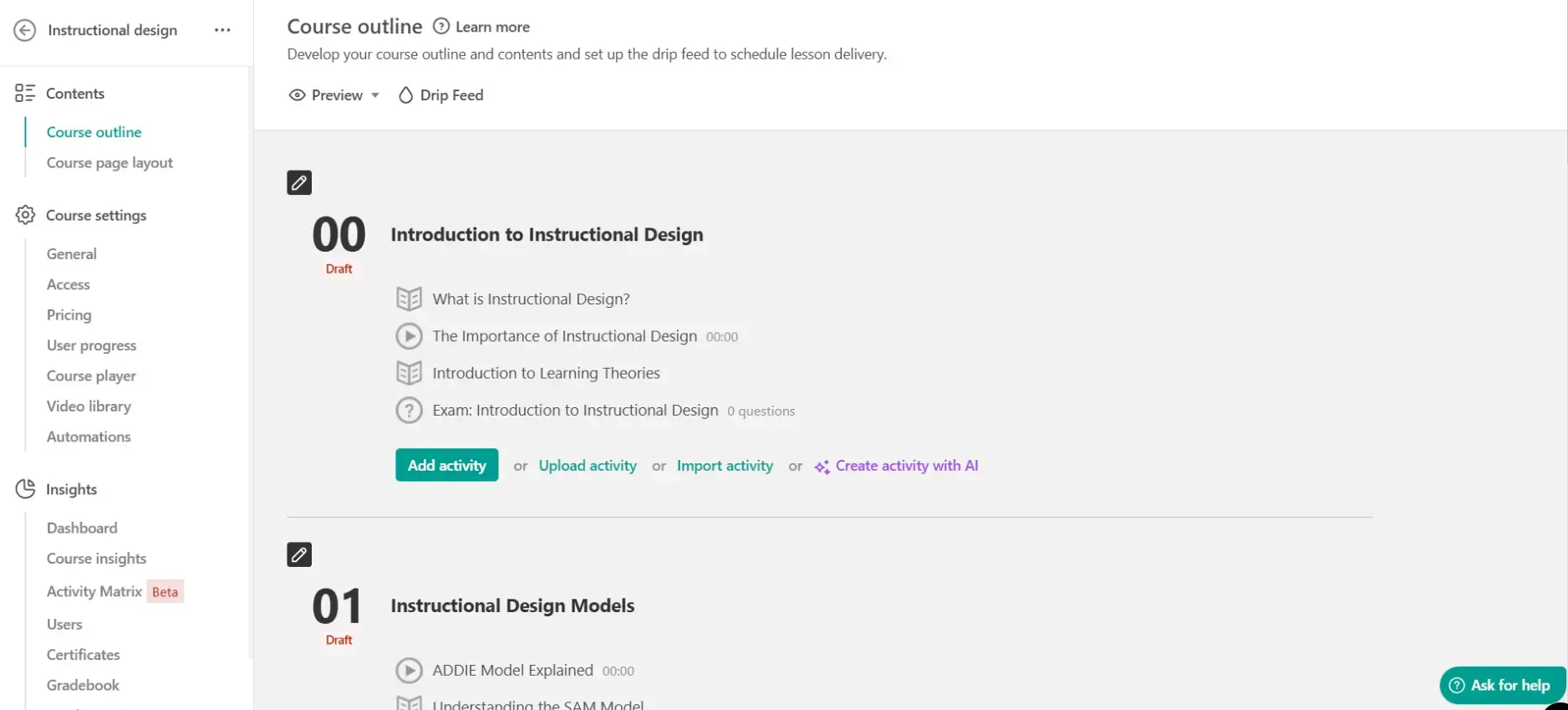
You might know LearnWorlds for its online courses, but it also lets you sell other digital products like downloads and subscriptions. If you’re building a digital storefront that includes more than just video lessons, it gives you the structure to do that without piecing together separate tools.
Best for: Online courses and training programs
Pros:
Cons:
Pricing: Paid plans start at $29/month
*Pricing retrieved from LearnWorlds in May 2025.
Check out: The best online course platforms
2. Podia
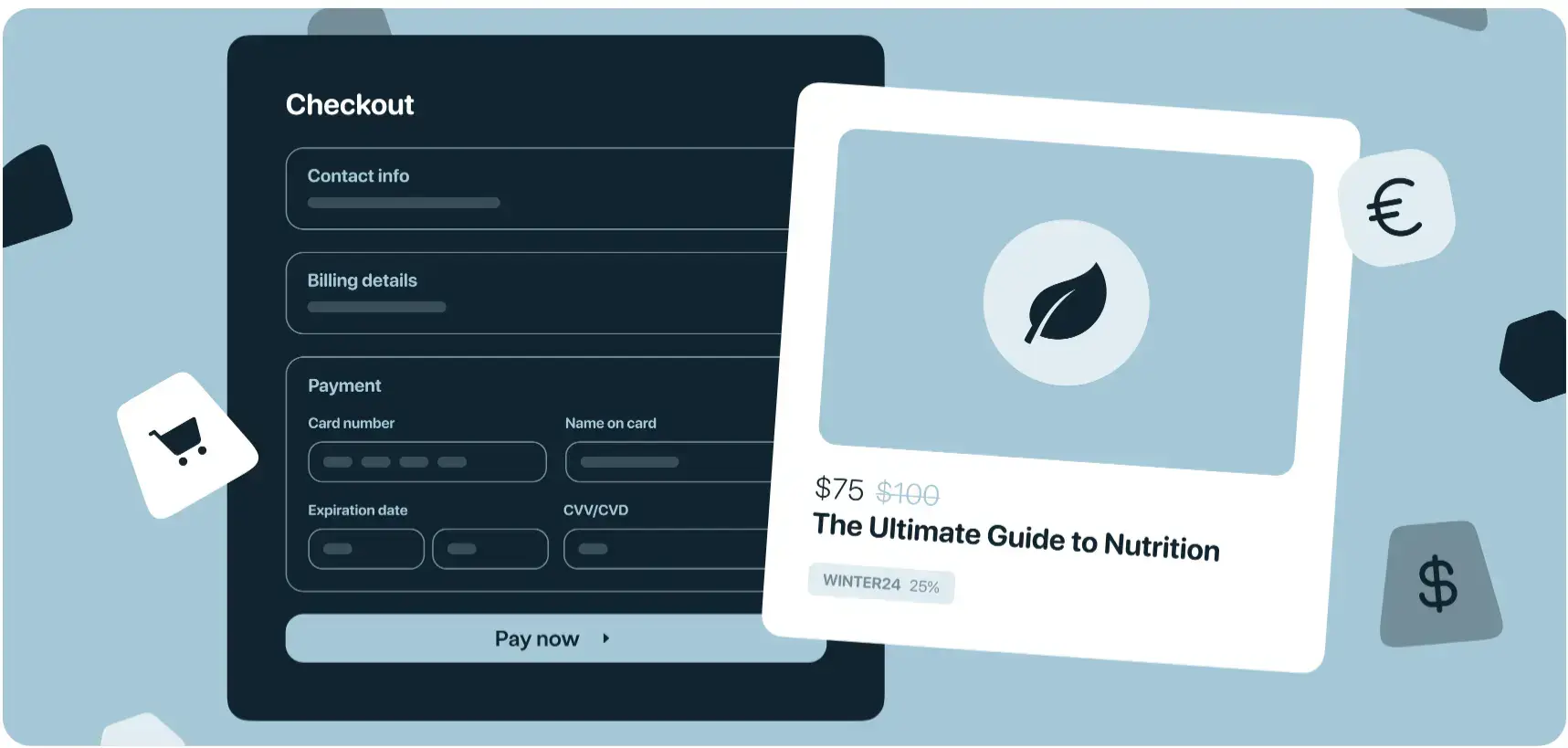
If you’re looking for one tool that covers courses, downloads, and community access, Podia can do all three. It’s made for creators who want a clean setup and don’t want to mess with integrations for things like email marketing or a website.
Best for: Bundled digital products (think courses + downloads + community)
Pros:
Cons:
Pricing: Starts at $33/month + 5% transaction fees
*Pricing retrieved from Podia in May 2025.
3. Thinkific
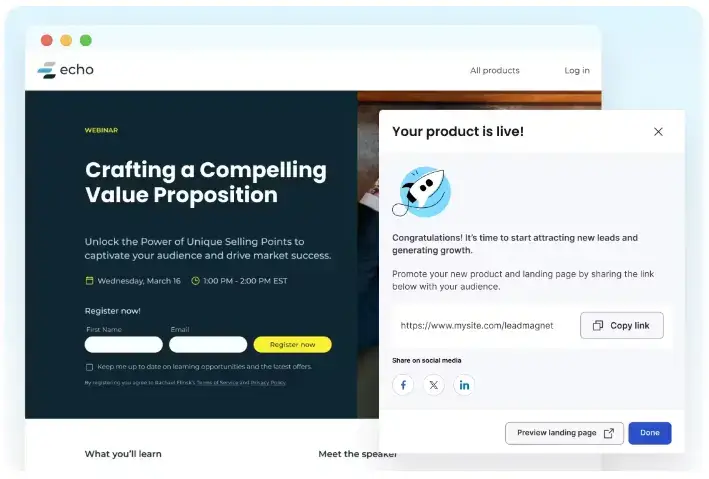
Thinkific is a popular online marketplace specializing in structured learning. This means it’s great for multi-lesson courses with quizzes and certifications. It also lets you attach downloadable resources to each lesson or bundle them as standalone products.
Best for: Structured, multi-module courses with supporting materials
Pros:
Cons:
Pricing: starts at $49/month
*Pricing retrieved from Thinkific in May 2025.
💡Read also: LearnWorlds vs. Thinkific comparison
4. Gumroad
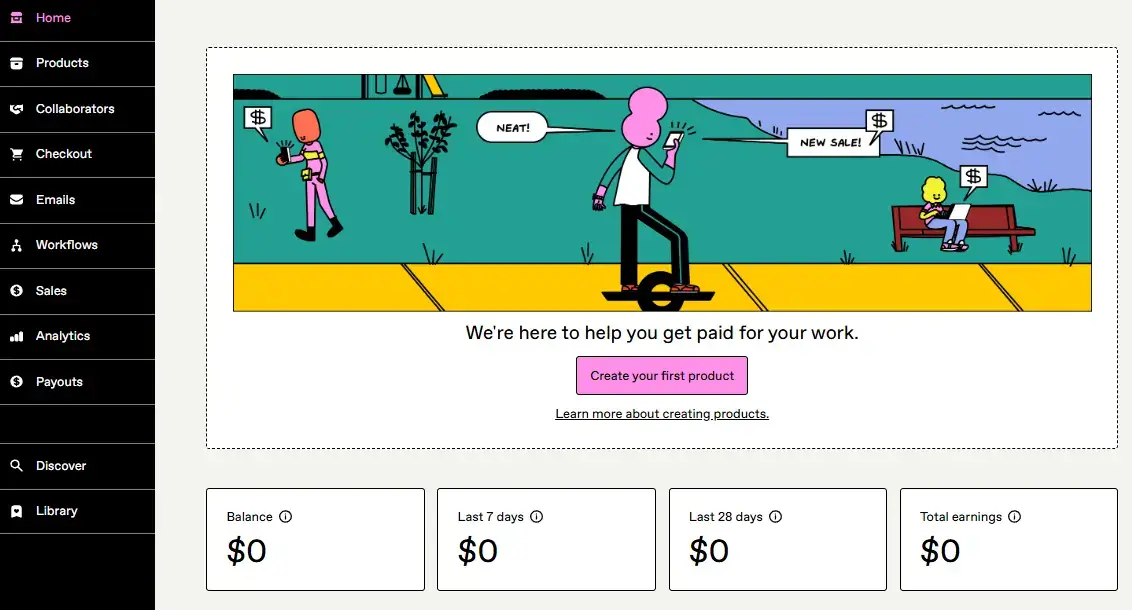
Gumroad is especially popular with small business owners who want to sell digital downloads online alongside their services. It’s a user-friendly marketplace for the buyers and sellers of digital products. It’s both quick to set up and great for selling single files like ebooks or design assets.
Best for: One-off downloads like selling ebooks or downloadable digital products
Pros:
Cons:
Pricing: 10% + $0.50 per transaction on all sales, no monthly fees
*Pricing retrieved from Gumroad in May 2025.
Learn more about how to create an ebook
5. Shopify

Shopify might have been one of the first platforms that came to mind when you thought about launching your own online store. And while it wasn’t built for digital products, with the right app, it handles them just fine. If you’re already selling physical goods or want to expand into them later, it’s a strong platform to grow with.
Best for: Sellers combining digital and physical products
Pros:
Cons:
Pricing: $29/month for Basic, may also have transaction fees
*Pricing retrieved from Shopify in May 2025.
6. Sellfy
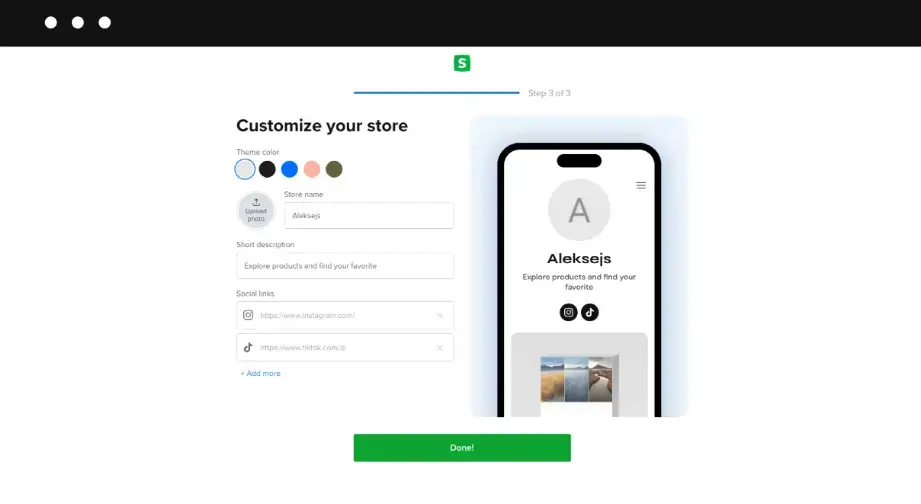
You can sell digital downloads and memberships from a single dashboard with Sellfy. But one thing that sets Sellfy apart? You can let customers choose what they pay. This is especially useful if you are a creator catering to a creative market, like a streamer or musician, and want to offer flexible pricing or collect tips from your audience.
Best for: Creators and streamers selling digital products to an engaged fanbase
Pros:
Cons:
Pricing: starts at $22/month for the Starter plan
*Pricing retrieved from Sellfy in May 2025.
7. Payhip
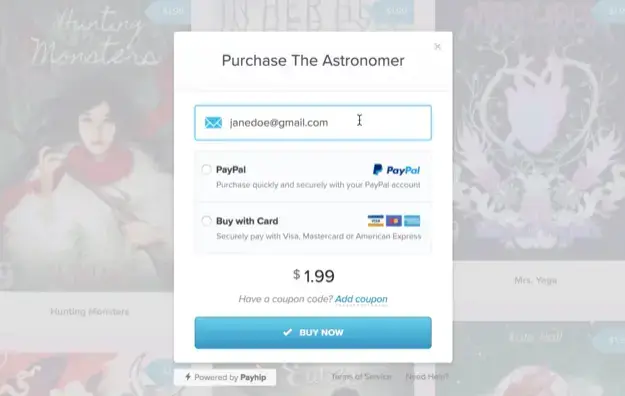
Payhip shines by handling those tricky EU VAT rules for you, so you don’t have to worry about tax paperwork when selling to European customers. It also makes it simple to reward promoters with an affiliate program or run limited-time bundle deals.
Best for selling: Digital products to global customers, especially in the EU
Pros:
Cons:
Pricing: $0/month +5% transaction fee with the Free Forever plan
*Pricing retrieved from Payhip in May 2025.
8. SendOwl

Already have a website? Just need a way to sell digital downloads online? SendOwl gives you a low-hassle way to do so. It stands out for security features like PDF stamping and license keys, so if you’re selling digital products that need secure transactions, it’s got you covered.
Best for: Sellers who need secure delivery for software or licensed content
Pros:
Cons:
Pricing: $39/month for the Starter plan
*Pricing retrieved from SendOwl in May 2025.
9. BigCommerce
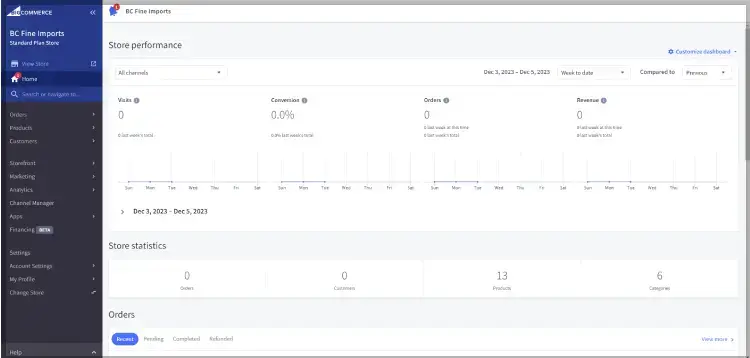
BigCommerce is, well, big. It’s a heavyweight ecommerce software that works well for businesses selling digital products at scale. It has multi-channel selling, which means you can offer downloads or memberships across your own online marketplace, Amazon, Facebook—you name it—without rebuilding anything.
Best for selling: Digital products through multiple storefronts and marketplaces
Pros:
Cons:
Pricing: Available upon request
*Pricing retrieved from BigCommerce in May 2025.
10. WooCommerce

WooCommerce is perfect for you if your site already runs on WordPress and you want full control over your store. It has a plethora of extensions that make it possible for you to sell everything from digital templates and music files to memberships and software.
Best for: Sellers who want complete control over how they sell digital products
Pros:
Cons:
Pricing: $0 to add to your WordPress site, but true cost varies according to your extensions
*Pricing retrieved from WooCommerce in May 20255
Comparing the top platforms
You’ve seen what the most popular ecommerce platforms offer. Still on the fence? Here’s how they compare based on what you’re selling and what kind of setup you want.
Features at a glance
Some platforms try to do everything in one place. Others keep things simple and lean. Here’s how they tend to break down once you start using them:
All-in-one platforms like Podia and Sellfy include features like product hosting and checkout without needing plugins or outside tools.
Plug-and-play options like SendOwl and Payhip are more lightweight. You bring your website or audience, and they handle the delivery and checkout.
Customizable platforms like Shopify and LearnWorlds give you more control over how things look and function through features like branded mobile apps and storefronts.
Security-first platforms like SendOwl and Gumroad stand out when you’re selling software, PDFs, or digital art you want to protect.
Platforms with strong marketing tools include LearnWorlds and BigCommerce. If you want to track detailed analytics without using a separate tool, these are the ones to look at.
Best for beginners vs. pros
Maybe you have experience with popular online marketplaces, maybe you don’t. No matter your level, there’s a platform with an online store to match so you can start selling quickly.
Beginner-friendly platforms
More advanced or flexible platforms
Best budget-friendly options
If you’re watching your spending or just starting out, these platforms give you a lot without the upfront cost:
Platforms like Shopify or WooCommerce can look affordable with low set-up fees, but the cost of extras can add up quickly.
Platforms with built-in course features
Not every platform is made for structured learning content. The top-rated according to users? LearnWorlds.
LearnWorlds is built for selling online courses, but it also gives you the tools to treat your content like a full digital product business. You can drip out lessons and lock content behind subscriptions, and its analytics let you know exactly what’s going on so you can adjust your marketing and digital product sales all on the same platform.
Close runners-up? Thinkific and Podia. Both offer course creation tools and digital delivery, but LearnWorlds pulls ahead if you want more control and room to grow.
Check out: How to create a profitable sales funnel to sell online courses
Where to sell digital goods based on your business type
We touched on it a bit already, but another key consideration when picking a platform is your business type. Based on what you’re after, here’s how the platforms on our list stack up.
Ultimately, the best ecommerce platform for selling digital products will depend on the product you sell and your business needs.
💡Read also: Knowledge economy: How to sell knowledge online
LearnWorlds: The best ecommerce platform for digital products
LearnWorlds is for more than just courses, you can use it to sell anything from downloadable workbooks to gated video libraries. With it, you can control exactly how your storefront and mobile app look, which helps build trust with buyers through your brand.
Add in excellent analytics and strong marketing tools that help with digital product sales, and you’ve got an ecommerce platform built to sell exactly what you need.
Give it a shot with a free trial, and see how LearnWorlds can help you sell digital products in 2025.
Sources:
[1] Global retail e-commerce sales will reach $6.8 trillion by 2028
Ciera Lamb
Ciera is a freelance content writer and editor connecting companies with their ideal audiences through blog articles and other online content. She approaches her writing with curiosity and research and enjoys the ever-present learning that comes with being a content writer. She is also an avid scuba diver, an aspiring Dutch speaker, and lover of all things nature.
FAQ
Everything you have ever wondered, but were too afraid to ask...

